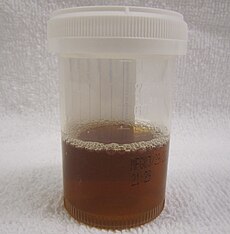
This morning we discussed an interesting case of a patient with painless jaundice after receiving multiple courses of antibiotics, including septra, for a presumed cellulitis.
Here is an approach to painless jaundice (not an exhaustive list):
1) Prehepatic causes:
- Hemolysis: i.e. AIHA, G6PD with offending drug
- Impaired hepatic bilirubin conjugation: Gilbert's, Crigler Najjar
2) Intra-hepatic causes:
- Inflammatory: Primary biliary cirrhosis, primary sclerosing cholangitis
- Malignant: Cholangiocarcinoma, hepatocellular carcinoma
- Infectious: Chlonorcus senensis (Chinese liver fluke), Ascaris lumbricoides, Viral: HBV, HCV, EBV, CMV (but usually produces more hepatocellular picture rather than a cholestatic picture), alcoholic hepatitis
- Drug induced liver injury
- Other: NASH, liver infiltration (amyloid, sarcoid, lymphoma)
3) Post-hepatic causes:
- Cholelithiasis: common bile duct obstruction, Mirizzi syndrome where distended gallbladder causes obstruction of extrahepatic bile duct
- Pancreatic neoplasm
- Stricture post instrumentation
A little more on Drug Induced Liver Injury (DILI)
1) Types of DILI:
- Can mimic all patterns observed in primary liver disease
- Acute hepatocellular injury: increased ALT/ALP ratio
- Cholestatic injury: Isolated increase in ALP, with decrease in ALT/ALP ratio
- Granulomatous hepatitis
- Steatohepatitis
- Can present as acute or chronic liver injury
- Acute hepatocellulary injury and fulminant liver failure:
- Examples of drugs that cause acute fulminant hepatitis include: acetaminophen, isoniazid, sulfonamides, cotrimoxazole, ketoconazole, anticonvulsants
- Acute Cholestatic injury:
- Presents clinically with jaundice, pruritis, dark urine and pale stools
- Liver enzymes reveal elevated ALP, GGT and Bili.
- Common culprit drugs include: anabolic steroids, oral contraceptives, prochlorperazine, and antibiotics (septra and erythromycin)
- See the following articles for more information:
- NEJM article on DILI
- Case report of Septra induced prolonged cholestasis: http://www.ncbi.nlm.nih.gov/pubmed/1587437
No comments :
Post a Comment